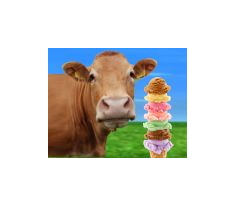How Many Scoops of Ice Cream in a Gallon?
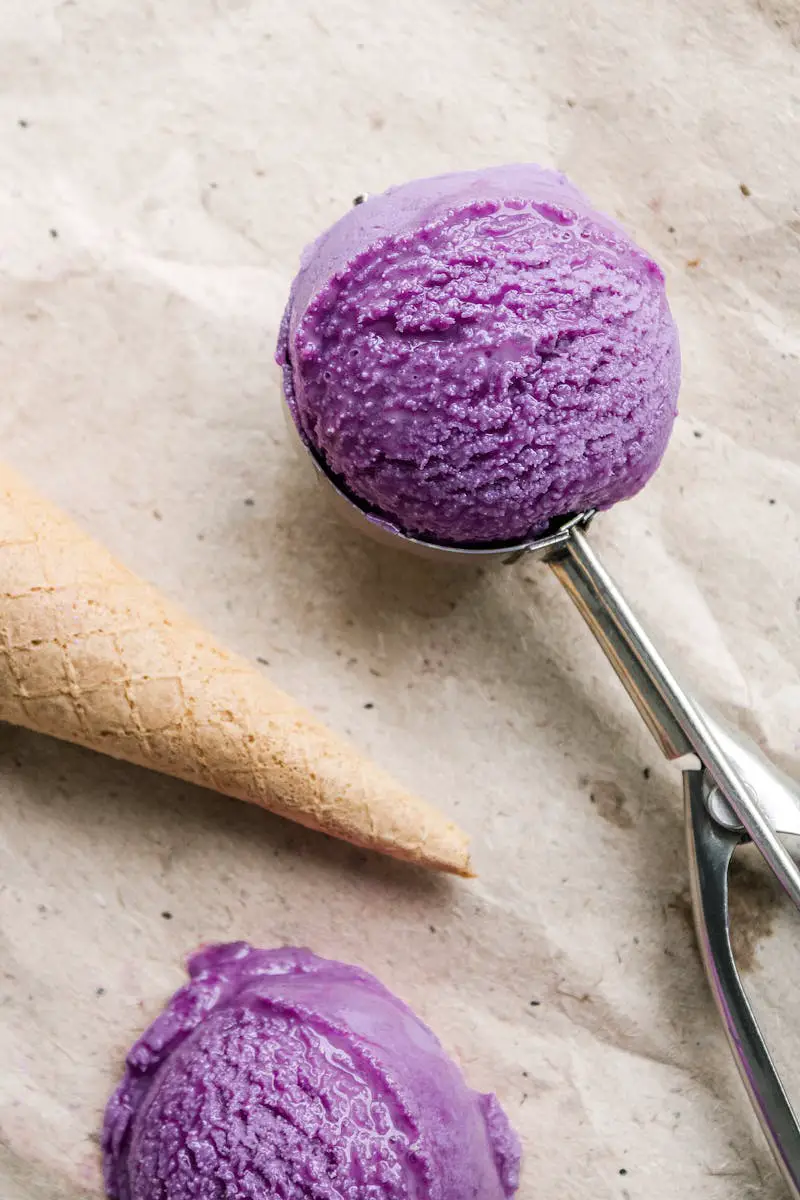
The response can vary based on the size of the scoop and the density of the ice cream. Since a medium scoop in the United States is a half cup and there are 16 cups in a gallon, on average there are around 32 scoops in a gallon of ice cream. This number can fluctuate depending on factors like the thickness of each scoop and the air content within the ice cream.
So whether you’re savoring a scoop or treating yourself to a gallon tub there’s plenty of delicious creamy goodness to enjoy!
Ice cream is a treat enjoyed worldwide known for its texture and wide range of flavors that cater to people of all ages. Whether you prefer choices, like vanilla and chocolate or more daring options such as salted caramel and mint chocolate chip there’s a flavor to suit every palate.
The amount of ice cream consumed by individuals varies based on tastes and dietary habits.
How Many Scoops of Ice Cream in a Gallon: The Science Behind Ice Cream Volume
Ice cream isn’t a dessert: it’s a careful blend of ingredients and techniques that come together to create a delightful frozen treat. In this piece we explore the elements of ice cream the concept of overrun and the various factors that influence its texture and volume.
1. The Essential Elements of Ice Cream:
Dairy: Traditionally ice cream contains milk and cream which form the base. The fat content plays a role, in its texture and richness.
Air: Adding air while freezing is crucial for giving ice cream its light and airy feel preventing it from becoming dense or icy.
Water: Ice cream includes water that freezes into ice crystals. Controlling the size of these crystals is vital for achieving the desired consistency.
Sugar: Apart, from sweetening the treat sugar also helps in creating a texture by lowering the point.
Emulsifiers and Stabilizers: These components work together to bind water and fat molecules improving creaminess and preventing quick melting.
2. Decoding Overrun: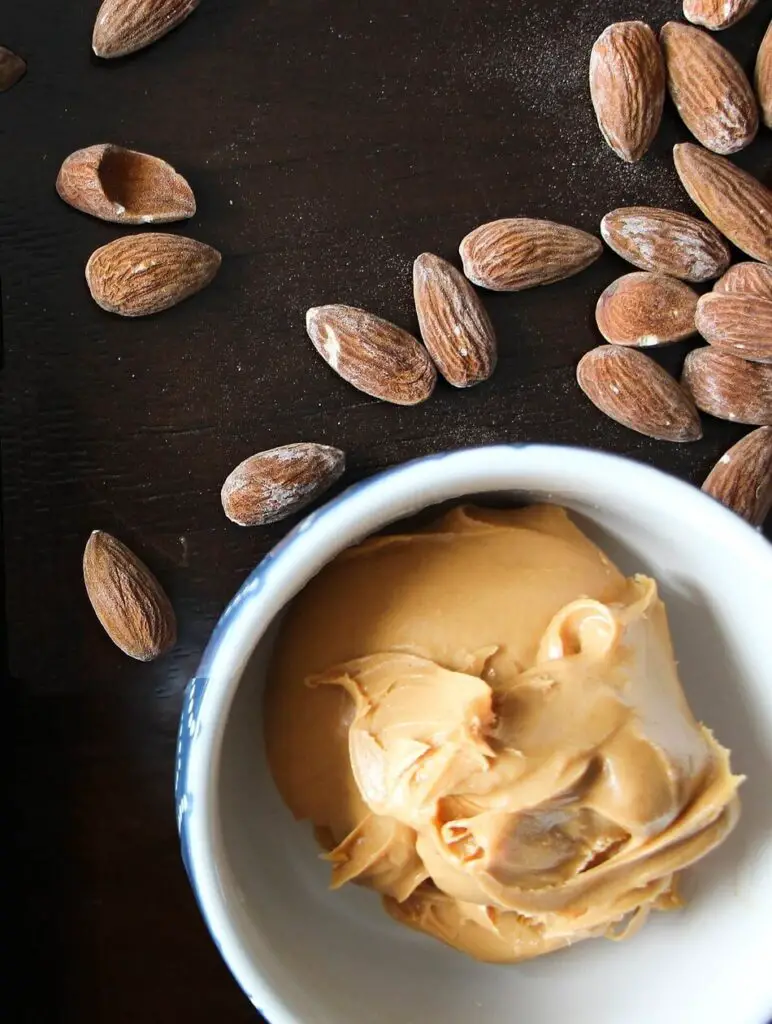

Definition: Overrun indicates the amount of air integrated into ice cream through churning process.
The percentage increase, in volume from the mix to the product is calculated.
Importance: Overrun greatly influences the texture and feel of ice cream. Controlling overrun properly results in a fluffy and smooth texture while excessive overrun can cause an icy consistency.
Careful Management: Ice cream producers meticulously regulate the amount of overrun to ensure consistency and quality across all batches.
Factors Influencing Ice Cream Volume:
Temperature: The freezing temperature impacts how water freezes affecting the formation of ice crystals and ultimately determining the texture of the ice cream.
Ingredients: The quality and type of ingredients used such as the content in dairy products and the choice of sweeteners affect both the composition and flavor of ice cream.
Production Techniques: Processes like pasteurization, homogenization and allowing time for aging before freezing are essential, in deciding the volume and texture of ice cream.
Churning Duration and Speed: Proper churning guarantees that air is evenly dispersed throughout the mixture contributing to achieving the desired consistency and volume.
Storage Conditions: The temperature at which its stored post production can influence how stable or textured an ice cream becomes over time.
In summary, making ice cream involves a mix of ingredients, methods and skills. By grasping the elements the idea of overrun and the diverse factors affecting ice cream volume we uncover the side of this popular frozen treat. Whether savored, in a cone, a bowl or squeezed between cookies, ice cream never fails to please palates due to the blend of science and creativity, in its making.
Understanding Gallon Measurements
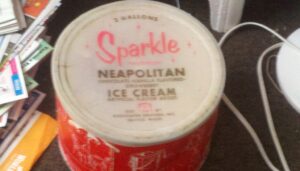
1980’s era 2 gallon Sparkle ice cream container
The gallon, an used unit, for measuring volume has an fascinating history that spans centuries. It is defined as the volume occupied by an 8 inch cube. It has been utilized in ways across different societies and eras.
In the United States the gallon is officially designated as 231 inches or 3.785 liters. This measurement is referred to as the U.S. Liquid gallon. It is commonly employed for liquids like water, milk and gasoline.
Conversely in the United Kingdom there exists a version of the gallon known as the imperial gallon. It is defined as 4.546 liters or 277.42 cubic inches. It is predominantly used in the UK and some former colonies.
For perspective, one gallon equals 4 quarts or 8 pints in both the U.S. and imperial systems, making conversions between these units quite simple for adjusting measurements.
The history of gallon measurements is a rich study with its roots extending to civilizations such as the Babylonians and Egyptians. Over time the gallon has seen changes and adaptations to accommodate shifts in trade practices, commercial activities and advancements in knowledge. In historical England the size of a gallon was determined based on the volume of a wine barrel due to local customs and trade practices. It wasn’t until the 19th century that efforts were made to standardize the definition of a gallon across regions.
Today, though the size of a gallon may differ based on the measuring system in use, it remains a unit for measuring volume in everyday tasks like cooking and refueling vehicles. Exploring its history and equivalents offers insight into how measurement systems have evolved in society.
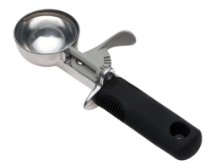
Scoop Sizes and Variations
When it comes to serving up the scoop of ice cream the size of the scooper is key. Ice cream lovers and shops often discuss the scoop size resulting in a variety of options worldwide. Let’s explore the sizes of ice cream scoops and their volumes, as well as how they vary across regions and shops.
In the world of ice cream scooping you’ll find sizes ranging from small to large with some variations in between. Here’s a look at the scoop sizes and their volumes.
Small Scoop: Also called a “scoopette” or “mini scoop ” this small scoop is great for those wanting a modest amount of ice cream. It typically holds around 2 ounces or 1/4 cup.
Medium Scoop: Offering a balance between indulgence and restraint this size provides a satisfying portion without overwhelming your taste buds. The medium scoop usually contains about 4 ounces or 1/2 cup of ice cream.
Large Scoop: Designed for ice cream lovers or those with big appetites, the large scoop serves up a generous helping of creamy deliciousness. This size, equivalent to 6 ounces or 3/4 cup is just right for those who fancy a luxurious dessert.
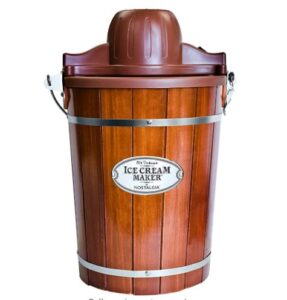
For instance in areas that prefer larger portions you may notice that the typical scoop sizes are slightly bigger compared to regions that embrace moderation. Additionally artisanal or specialty ice cream shops might have scoop sizes tailored to their special creations catering to diverse tastes.
Moreover each scooper may have their technique when scooping ice cream leading to slight variations in the amount dispensed with each scoop. Some may opt for larger servings while others stick to a more standardized portion size.
In the end no matter the size of the scoop enjoying a serving of ice cream goes beyond measurements. Whether its a serving for a light treat or a generous portion, for a special event the magic of ice cream lies in its ability to bring joy with every spoonful.
The time you visit your preferred ice cream shop don’t worry about how many scoops of ice cream in a gallon—just relish the moment and appreciate the delightful escape it provides.
The Scoop-to-Gallon Ratio
When it comes to enjoying a serving of ice cream it’s important to understand how scoop sizes relate to volume. Figuring out the number of scoops in a gallon involves looking at factors like the type of ice cream and how dense it is. Lets explore the calculations and things to think about when estimating the scoops per gallon for types of ice cream.
Common Scoop Sizes and Volumes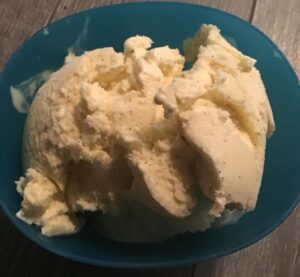

Before we get into the math, let’s go over some scoop sizes and their rough volumes:
- Small Scoop: 2 ounces or about 1/4 cup
- Medium Scoop: 4 ounces or around 1/2 cup
- Large Scoop: 6 ounces or roughly 3/4 cup
Calculating Scoops per Gallon
To figure out how many scoops are in a gallon we first convert a gallons volume into ounces (128 ounces). Then we divide the volume of ice cream (in ounces) by each scoop size to find out how many scoops fit in a gallon.
- Small Scoop: Approximately 64 scoops per gallon
- Medium Scoop: Around 32 scoops per gallon
- Large Scoop: 21.3 scoops, per gallon
Factors to Consider for Different Ice Cream Types
Different kinds of ice cream have densities and air levels which can affect the size of each scoop. Let’s see how these factors play a role in determining the serving portions:
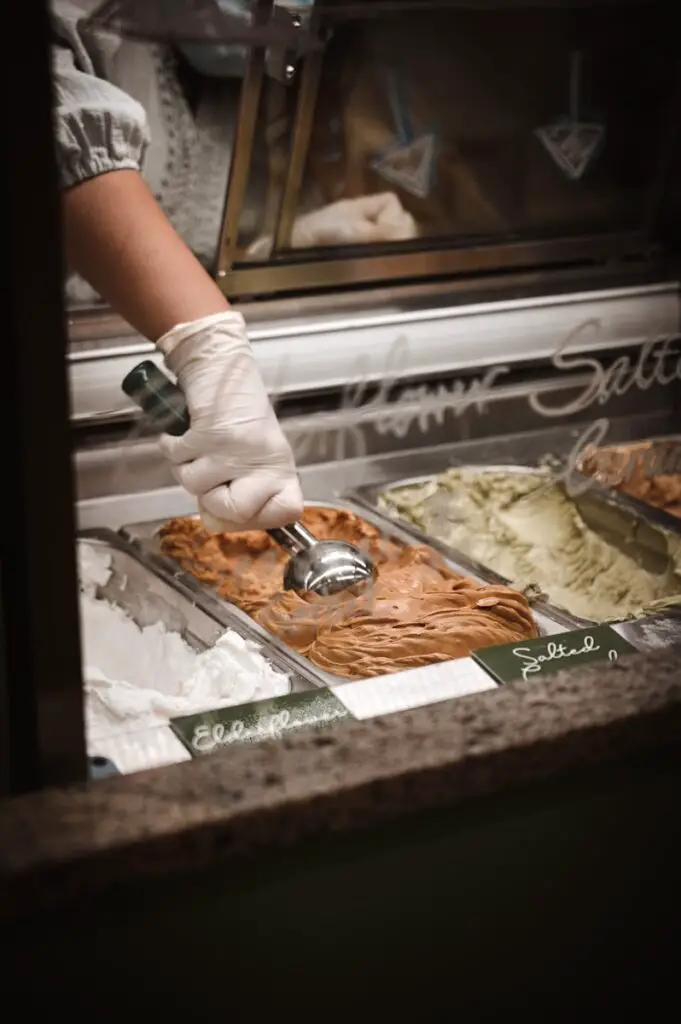
Serve: Soft serve ice cream tends to be lighter in texture as it contains more air than traditional ice cream. This higher air content can result in scoops per gallon using the same scoop size.
Premium Ice Cream: Premium ice creams often have a fat content making them creamier. While this richness can affect the density of the ice cream, its impact on scoop volume may vary depending on how its made.
Estimating the number of scoops per gallon is helpful for both ice cream shops and enthusiasts. However it’s important to note that these calculations are based on scoop sizes and volumes. Differences in ice cream types, density and air content can influence the number of servings, per gallon.
Enjoying a scoop of traditional vanilla or treating yourself to a luxurious gelato, the delight of ice cream is found in its smooth texture and the happiness it brings with every spoonful. When you’re dishing out your frozen dessert take a moment to appreciate the elements involved and serve it up with joy!
Real-world Applications
Knowing how many scoops are in a gallon of ice cream isn’t about convenience: it can have real world implications in various situations from catering events to controlling portions in retail settings. Let’s delve into some scenarios where this knowledge comes in handy and how it benefits both consumers and professionals in the ice cream industry.
Catering Events
Be it a wedding, birthday bash or corporate function catering events often involve serving amounts of ice cream to guests. Understanding the number of scoops per gallon helps caterers estimate the amount of ice cream required to meet the desired servings. This allows them to plan ahead and prevent any shortages or wastage.
Event Planning
Event organizers responsible for arranging festivals, fairs or community events can also make use of the scoops per gallon ratio. By knowing how much ice cream is necessary per gallon they can make decisions regarding procurement, budgeting and logistical arrangements. This knowledge ensures that event attendees enjoy their ice cream without any hiccups due to excess supply.
Portion Control in Retail Settings
For ice cream shops maintaining portion control is crucial, for consistency and cost management.
Knowing how many scoops can be obtained from a gallon helps retailers accurately portion out ice cream servings for customers whether they prefer cones, cups or sundaes. This practice is beneficial for maintaining profitability by reducing waste and making the most of each gallon of ice cream.
Menu Planning and Product Development

Ice cream manufacturers and retailers can use the scoop to gallon ratio to plan menus and develop products. Understanding the volume of each scoop allows them to calculate servings per container and set prices accordingly. This information also guides decisions on introducing flavors sizes or packaging options based on consumer preferences and market trends.
Efficient Inventory Management
Understanding the number of scoops in a gallon enables ice cream suppliers to optimize inventory management. They can predict demand accurately ensuring they have enough stock without excess perishable items. This approach helps cut storage costs, product spoilage risks and improve overall operational efficiency.
To sum up knowing the scoops per gallon ratio benefits both consumers and industry professionals in the ice cream sector. Whether its for catering events or daily operations, like portion control and product innovation this knowledge leads to decision making, increased efficiency and higher customer satisfaction.
Whether you’re enjoying a scoop of ice cream at your go to spot or organizing the treats for your upcoming gathering understanding the ratio of scoops per gallon guarantees a delightful and fulfilling experience, for everyone involved.
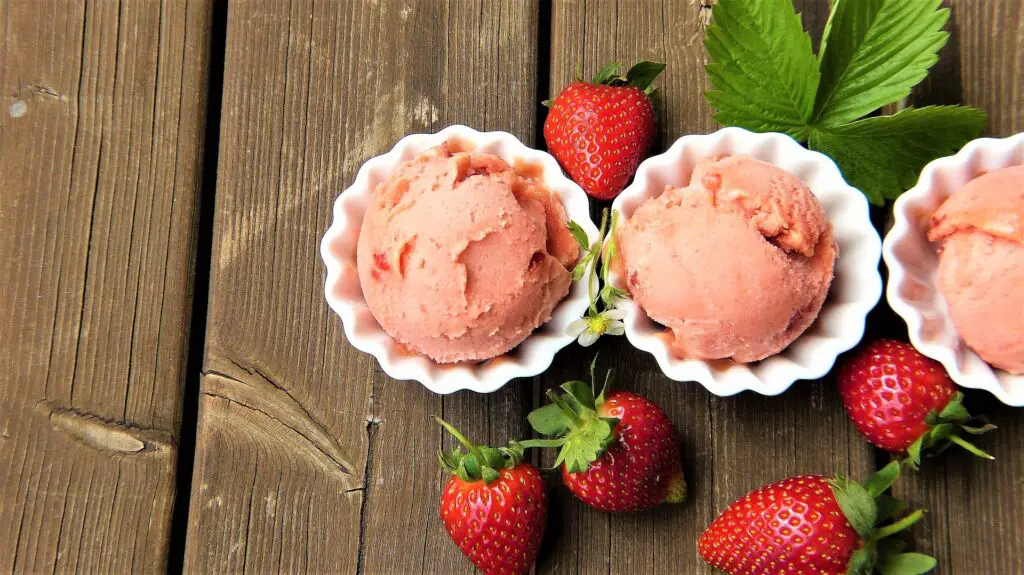 Factors Affecting Scoop Count in a Gallon of Ice Cream
Factors Affecting Scoop Count in a Gallon of Ice Cream

When it comes to serving up scoops of ice cream maintaining consistency is key to ensuring customer satisfaction. There are quite a number of factors that can affect how many scoops you can get from a gallon influencing not only the size of each scoop but also the overall enjoyment of your ice cream treat. Let’s explore these factors and discuss why it’s important to uphold uniform portion sizes for customer happiness.
Impact of Melting
The speed at which ice cream melts significantly influences how many scoops can be obtained from a gallon. Leaving ice cream out at room temperature in warmer environments causes it to melt faster resulting in smaller scoops. This could lead to fewer scoops per gallon compared to when the ice cream is freshly scooped from a cold freezer.
To address this issue ice cream shops often utilize freezers or display cases that maintain the ideal serving temperatures for the ice cream preventing melting and ensuring each scoop is just right.
Serving Method
The manner in which you dish out the ice cream can also affect the number of scoops in a gallon of ice cream. Whether you opt for a scoop, a spade or a soft serve machine each method may yield slightly varied portion sizes.
Soft serve machines for example produce an airier texture compared to scooping ice cream from a container potentially resulting in more servings per gallon. Likewise the size and shape of the scoop or spatula used can influence the quantity of each scoop affecting the number of servings.
Scooping Technique
The method by which the ice cream is scooped can significantly impact portion sizes and consistency. Elements such as the angle at which the scoop is held its depth into the container and the pressure applied during scooping all contribute to determining the size of each scoop. Additionally experienced scoopers tend to exhibit more uniform techniques than novices, leading to consistent portion sizes and an increased number of scoops per gallon.
Importance of Consistency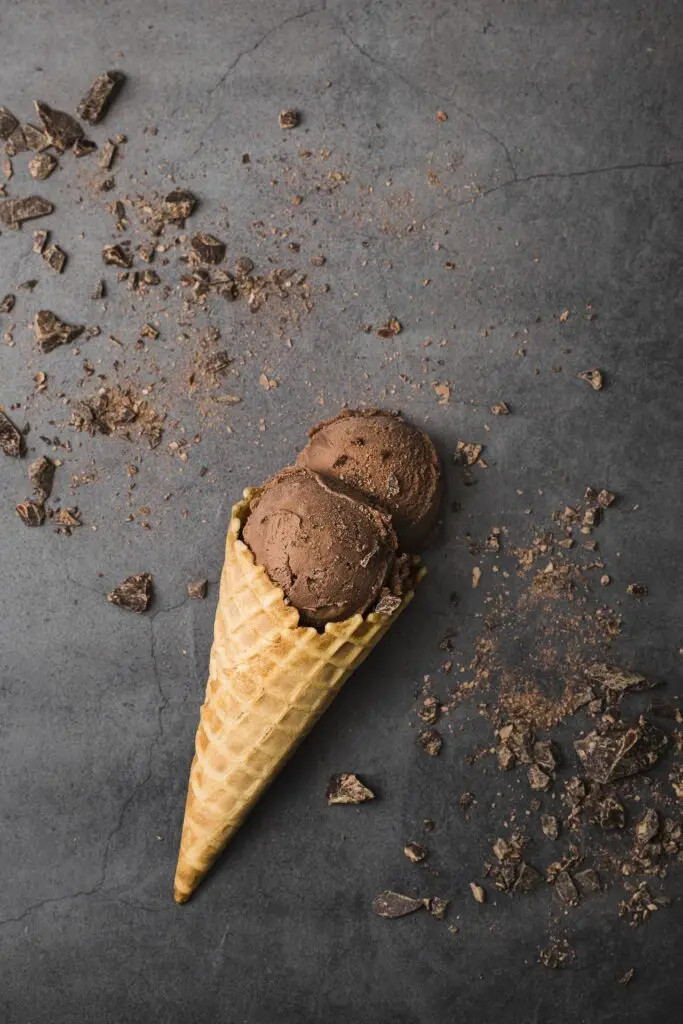

Maintaining uniformity in portioning is crucial for ensuring customer satisfaction and upholding an ice cream parlors reputation. Customers not only expect consistent taste and quality but also standardized portion sizes.
Whether they order a single scoop cone or a sundae customers appreciate knowing they will receive an amount of ice cream every time they visit. Consistent portioning also helps with cost control and enhances profitability for ice cream sellers, by minimizing waste and optimizing inventory usage.
In conclusion several factors affect the number of scoops of ice cream that can be scooped from a gallon, including the speed at which it melts, serving methods and scooping techniques. Consistency in portion sizes is essential for ensuring customer satisfaction and efficient operations in the ice cream industry.
Understanding these aspects and implementing portion control measures can help ice cream parlors provide a delightful and consistent experience for their customers, one scoop at a time.
Cultural and Regional Variances
The consumption and presentation of ice cream can vary greatly across regions showcasing cultural norms and preferences. Let’s explore the intricacies of how ice cream is enjoyed and served, comparing portion sizes from scoops to gallons in different countries and areas.
Cultural Practices in Ice Cream Enjoyment
United States
In the U.S. ice cream is a dessert beloved by people of all ages especially during sweltering summer days. American servings are often generous with decadent portions commonly seen in ice cream parlors and sweet shops. American treats like the “sundae” and “banana split” feature multiple scoops of ice cream topped with an assortment of delicious toppings.
Italy
Italy is renowned for its gelato, an smoother version of ice cream with lower fat content. Gelato servings in Italy are typically smaller than those in America reflecting a preference for quality over quantity. Italians relish gelato as a treat enjoying small scoops, in cones or cups while taking leisurely strolls through charming streets and squares.
Japan
In Japan the love for ice cream is a mix of tradition and innovation. Japanese ice cream shops offer a variety of flavors drawing inspiration from local ingredients and cultural influences. Portions are kept small reflecting the appreciation for sophistication and presentation. Soft serve ice cream is a hit in Japan often adorned with vibrant toppings and served in fancy cones.
Comparison of Scoop to Gallon Ratios
United States vs. Italy
In the U.S., where big portions are the norm, the ratio of scoops to gallons is lower compared to Italy, known for its smaller but denser servings. While an American scoop may give around 32 servings per gallon an Italian gelato scoop can yield more servings due to its compact texture and petite size.
Japan vs. United States
Japanese portions are generally smaller than those in the U.S. reflecting a value on moderation and harmony. Consequently the scoop-to-gallon ratio in Japan might be higher as smaller scoops result in servings per gallon compared to American scoops.
Ice cream choices and portion sizes are shaped by cultural elements, like taste preferences, culinary customs and societal standards. Different areas have their preferences when it comes to serving sizes. Some like big portions while others prefer smaller more elegant servings.
By looking at how much ice cream is scooped compared to how much is in a gallon across various countries and regions we can understand the different ways people enjoy this classic frozen treat worldwide.
Whether it’s a sundae in the US a delicate gelato in Italy or a fun soft serve creation in Japan, ice cream knows no boundaries and brings happiness and sweetness to people all over.
Conclusion: How Many Scoops of Ice Cream in a Gallon?
How many scoops of ice cream in a gallon? Generally in the United States, a medium 1/2 cup scoop will give you 32 scoops. But this depends on a number of factors, as we’ve discussed: melting rate, serving method, and technique. Whether you are serving your large family gathering or preparing to start an ice cream business, this information should help you to bring forth the joy that is ice cream!
Go to Ice Cream Servings Main Page from How Many Scoops of Ice Cream in a Gallon?
Go to Serving-Ice-Cream.com Home Page from How Many Scoops of Ice Cream in a Gallon?


